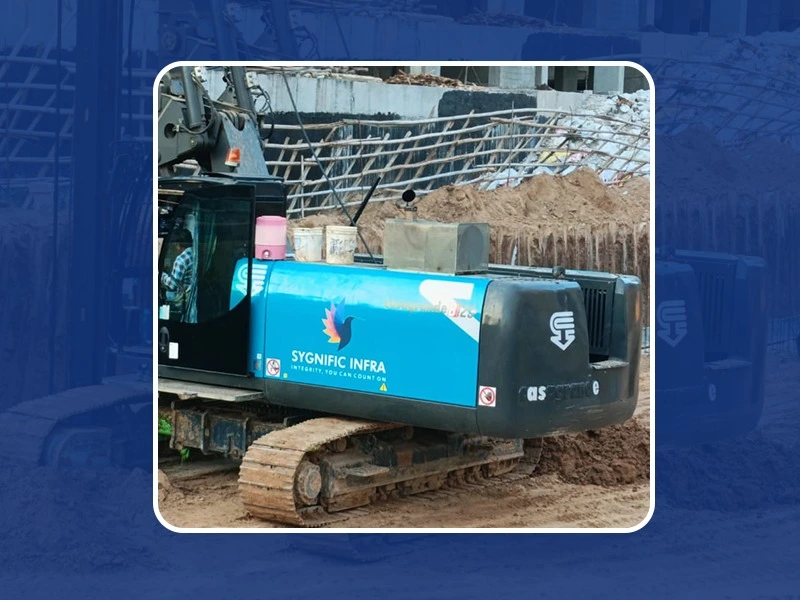Our approach to infrastructure projects has radically changed since the construction industry adopted D-Walls (Diaphragm Walls) technique, particularly in metropolitan areas where space is at a premium. But like with every breakthrough, problems occur and call for original answers.
Let’s examine the world of D-Wall construction in more detail, looking at the difficulties that arise on the job site and the unique solutions that are developed to deal with them. BlueWing DCPL is a pioneer in the building of sustainable and innovative construction.
Understanding D-Walls
Before we go into issues and solutions, let’s review the basics of D-Walls. These structural elements function as retaining walls, offering stability against lateral soil pressure and permitting excavation for underground structures such as basements.
D-Walls are constructed from panels of reinforced concrete, which are put together by filling in tiny gaps with bentonite slurry to stabilize the earth. Concrete is used in place of the slurry once the panels are installed.
Challenges Encountered
Soil Conditions
Varying soil compositions pose a significant challenge during D-Wall construction. For the structure to remain intact, every type of soil—from cohesive clays to loose sands—needs a different strategy.
Space Limitations
In urban environments, limited space often impedes conventional construction methods. D-Wall construction requires careful design and execution because of the limited space available.
Groundwater Seepage
Unchecked groundwater seepage has the potential to cause structural failures and delays by compromising the integrity of D-Walls.
Concrete Quality Control
For D-Walls to last a long time, constant concrete quality must be maintained. Any deviations in composition or curing can compromise structural integrity.
Creative Remedies
Advanced Soil investigation
A complete examination of the soil can be achieved by utilizing state-of-the-art instruments such as soil resistivity testing and ground-penetrating radar. Engineers can utilize this data to tailor construction methods to specific soil conditions, potentially reducing hazards.
Modular Construction Techniques
D-Wall construction in confined places is made easier by embracing modular construction techniques. It is possible to build prefabricated panels on-site, which expedites the procedure and reduces disturbances to the nearby infrastructure.
Waterproofing Technologies
D-Walls are successfully sealed against groundwater intrusion by using cutting-edge grouting methods and waterproofing materials. Using sump pumps and dewatering wells also aids in controlling groundwater levels while building is underway.
Automated Quality Control technologies
Using automated technologies to mix and pour concrete guarantees a constant quality level during the building process. Concrete property monitoring in real-time allows for early deviation detection and timely remedial action.
Lessons Learned
Adaptability is Key
Flexibility in approach is vital when encountering unforeseen challenges during D-Wall construction. Overcoming challenges requires being able to adjust techniques and use creative solutions.
Success Is Driven by Collaboration
Project outcomes are improved and synergy is fostered when engineers, contractors, and stakeholders collaborate effectively. Frequent exchange of information and communication makes it easier to recognize any problems and put timely fixes in place.
Invest in Technology
By embracing new developments in technology, construction teams can get beyond long-standing constraints. Purchasing cutting-edge tools and software improves productivity, accuracy, and safety at work.
There are many difficulties in building a D-wall, including difficult soil conditions and limited space. Nonetheless, these difficulties can be turned into chances for development and progress with creativity and inventiveness.
Construction teams can confidently negotiate the complexities of D-Wall construction by utilizing cutting-edge technologies, modular building methods, and collaborative approaches. This ensures the successful completion of infrastructure projects.
The knowledge gained from D-Wall construction stands as evidence of the industry’s resiliency and inventiveness as we push the bounds of building excellence. BlueWing DCPL makes use of the latest techniques and methods and keeps on investing to improve its construction methods and stand out from the competition.
